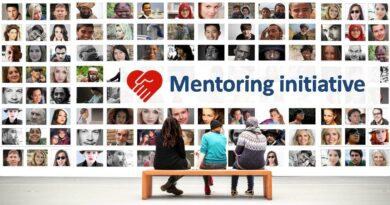How to get your G1, G2 and G Driving License
Getting your driving license in Canada is one of the most crucial aspects of settling down. It might seem an imposing task but with the right guidance and adequate training, it is a breeze. Driving Licenses in Canada are issued by the respective provinces. But with a license issued in one province, you can drive all across Canada. If you are a new immigrant to Canada and wondering if you can drive in Canada with your origin country driving license, please read: Driving in Canada on a non-Canadian driver’s license or International Driving Permit.
Almost all provinces in Canada have a Graduated Licensing System. Like in Ontario, you have to take one written test (called G1) and two road tests (G2 and G) to get the full fledged driving license. The written exam tests the knowledge of the rules of the road while G2 and G evaluate your driving skill on the road. Let us take a moment to Graduated Licensing System followed in Ontario.
Graduated Licensing System
G1 License: A G1 license is like a learner’s license with restrictions to drive alone. The knowledge test is an objective one that evaluates your knowledge of the rules of the road and traffic signs. To apply for a license you must be 16 years old, pass a simple vision test and also pass a knowledge test. Once you get a G1 license, you can start practicing on the road with an driving instructor/experienced G class driver with minimum 4 years of experience. Since G1 is considered a learner’s license, you are not allowed to drive alone. As discussed above you must be accompanied by another ‘qualified’ driver who must sit in the front passenger seat. You can drive alone once you get your G2 driving license.
In case you are looking to write your G1 Test, please visit this An exhaustive guide to getting your G1 driving license in Ontario.
G2 License: To get a G2 license, you need to pass a road test. A G1 License holder becomes eligible for a G2 License only after 12 months or 8 months in case one does a Driver Training Course from an approved Driving School. People with more than 4 years of international driving experience can directly appear for a G2 or a G test without any wait. For a G2 test, one needs to take a road test at a DriveTest Centre. Please not that driving on the highway is not tested under the G2 test and hence it is relatively easier to clear than the final G Test. G2 License has very few restrictions as compared to a G1. You can drive on the highways and do not require an experienced driver as a co-passenger. Thus you can easily own a car and drive normally as a G Driver could.
Coming soon:An exhaustive guide to getting your G2 driving license in Ontario.
G License: A G License is the full fledged license with no restrictions. To get a full G License, you should have 12 months of driving experience or 8 months after a driving training course. You also have to pass a road test where you will be tested for your driving skills on the highways as well apart from the things tested under the road test for G2 license. The tolerance for errors during a G test is low as someone with a G license can also drive an Uber and should be really good. G license is the final license.
Coming soon:An exhaustive guide to getting your G driving license in Ontario.
Getting your international driving experience recognized
You can give a G or G2 test immediately after getting your G1 in case you have sufficient international driving experience and can produce supporting proof. As a proof you just have to bring a driving license extract from your home country to qualify your years of driving experience. Please note that at the time of submitting your extract at a Drivetest centre in Ontario, your extract should not be dated more than 6 months old. In case it is, then your extract may not be accepted as valid. In order to avoid such such an event, visit your nearest Drivetest centre to get your experience recognized as soon as you land. There has been a lot of confusion as some DriveTest centres refuse a printed Extract. To be on the safer side, get your Extract stamped and signed by the concerned authorised Officer in your origin country.
In case you are from India, you can go to the Sarathi website and order a print online. If your Indian driving license is not a chip based card, it is likely your details are not present in the online database and hence you may not be able to order the extract online. You would have to go to the Regional Transport Office which issued you the license in order to get your license details digitised. Once it is done, you can order your extract online.
Get completely free resources on Experli
Experli provides free study material and practice quizzes to help you ace the G1 test.
What is G1 Driving test and how to take it?
Read this article to understand about the eligibility conditions for G1, how to apply for the test, driving restrictions on G1 drivers and other basic details.
Read G1 basicsG1 Study Guide 1: Traffic signs
Spend some time looking at the various traffic signs used in Ontario to prepare for the G1 Test.
Study Traffic signsFree G1 Practice Test 1: Traffic signs
Take the Traffic signs G1 Test to check your level of knowledge and to see how you may perform during the G1 Test.
Take the TestFree G1 Practice Test 2: Traffic signs
Take the Traffic signs G1 Test to check your level of knowledge and to see how you may perform during the G1 Test.
Take the TestG1 Study Guide 2: Demerit Point System
Study the Demerit Point System used to penalise drivers which is tested in the G1 Exam.
Study Demerit Point SystemFree G1 Practice Test 3: Traffic rules
Take the Traffic rules G1 Test to check your level of knowledge and how you may perform during the G1 Test.
Take the TestFree G1 Practice Test 4: Traffic rules
Take the Traffic rules G1 Test to check your level of knowledge and how you may perform during the G1 Test.
Take the Test





